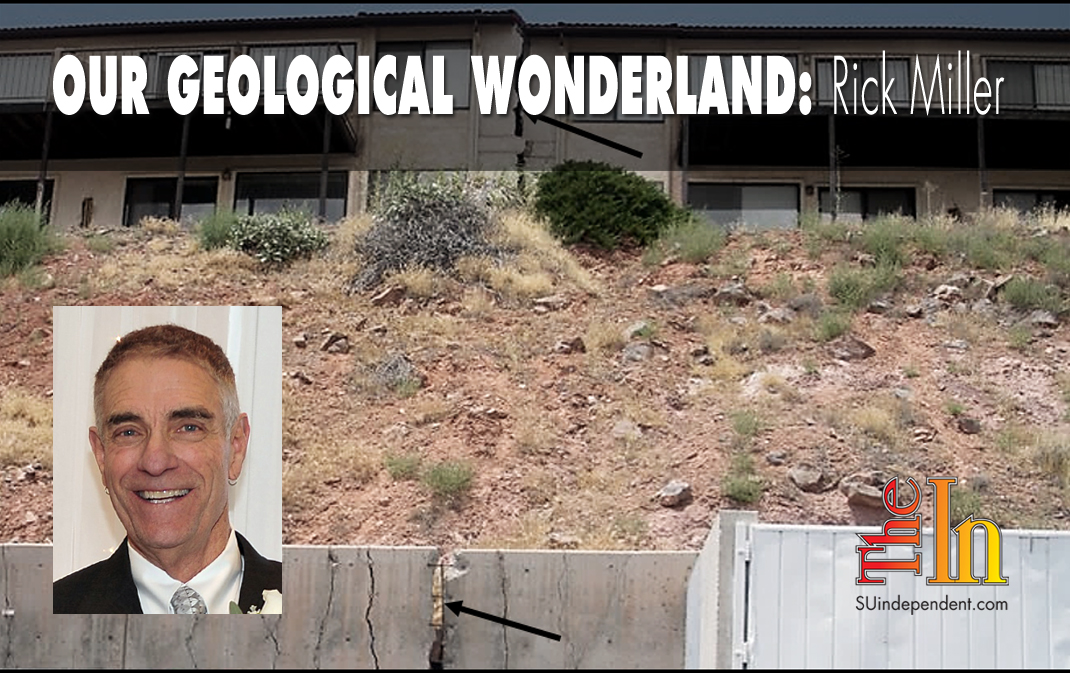
Our Geological Wonderland: Blue clay
Making things out of clay in a ceramics class is fun and creative. In contrast, “Don’t build on blue clay!” is a common phrase heard in southern Utah. And for good reason, as this particular clay is unstable and the cause of a number of slumps and slides that have damaged or destroyed roads and buildings around the city and adjoining areas. From a geologic perspective, our blue clay has an interesting history that extends back in geologic time to the Triassic Period, a little over 200 million years ago (Figure 1). Blue clay primarily occurs within the upper member of the Chinle Formation. This member, known as the Petrified Forest Member, received its name from exposures at Petrified Forest National Park in northern Arizona.
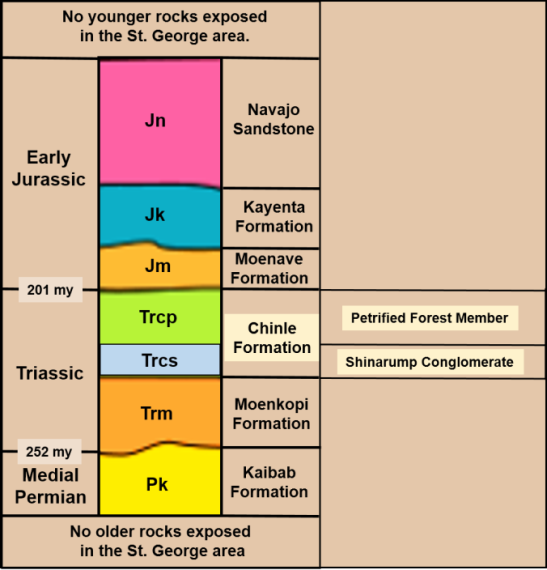
The Chinle Formation consists of a variety of different sedimentary rock types including conglomerate, sandstone, siltstone, mudstone, and clay. Within the St. George area, the formation is divided into only two members. But in other areas, additional members have been recognized and named. Chinle sediments initially formed in ancient Late Triassic environments such as rivers, floodplains, and lakes, which were widespread in what is now the southwestern part of the United States (Figure 2). To the east and south were low-lying upland areas, which were undergoing weathering and erosion and provided the source for most of the mud, silt, sand, and pebbles along with some clay minerals that were deposited in these environments. To the west, where dry lands of western Nevada and California are today, was ocean during that same interval of time,
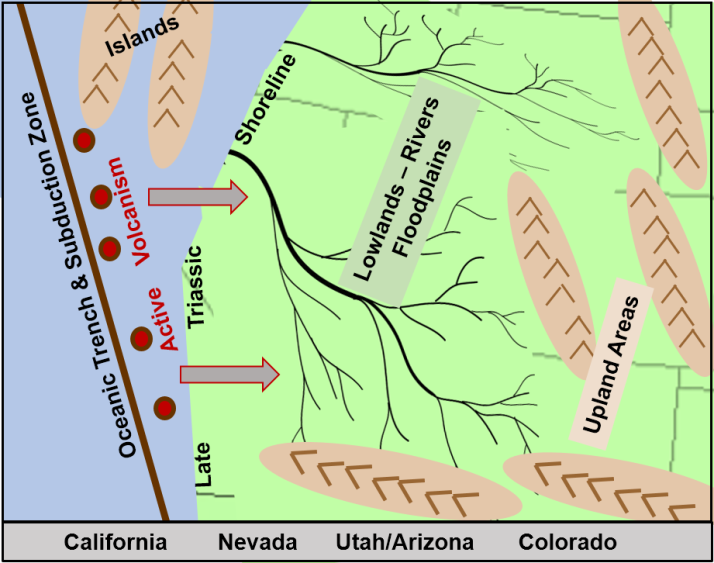
During Triassic time, most of the present continents were combined into a single landmass, a supercontinent, which was given the name Pangaea a little over 100 years ago and which had formed between 250 and 300 million years ago. By Late Triassic and Early Jurassic time (201–180 million years ago), Pangaea had begun to split apart, with North America beginning to move westward (Figure 3). Thus, what was then the western edge of the continent became what is known as a “leading edge,” and therefore it began to be affected by tectonic activity such as uplift and volcanism. By Cretaceous time, about 120 million years ago, this region was very active and perhaps resembled what is today the Cascade Range volcanic chain.
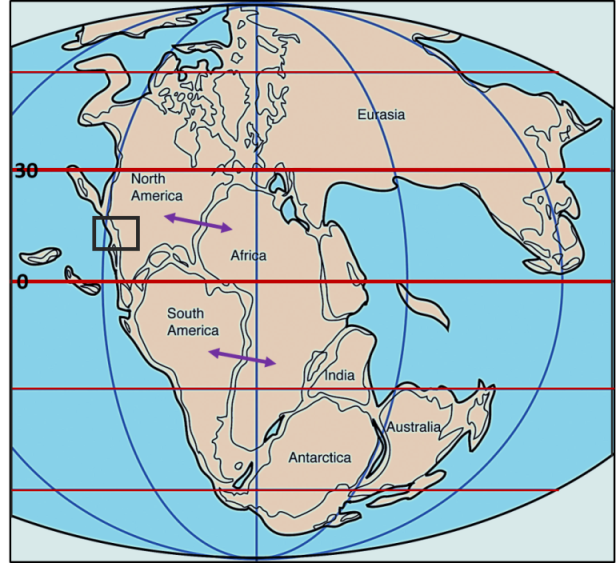
As indicted on a geologic map below, rocks that make up the Chinle Formation are exposed in an arcuate pattern within the St. George area (Figure 4). The most distinctive part of the formation is the Shinarump Conglomerate member because it is hard and resistant to erosion, and so it tends to form ridge tops in the area. The size of the pebbles and their generally rounded outlines indicate they were transported by relatively strong water currents and that they were transported a significant distance from their original source by rivers (Figure 5).
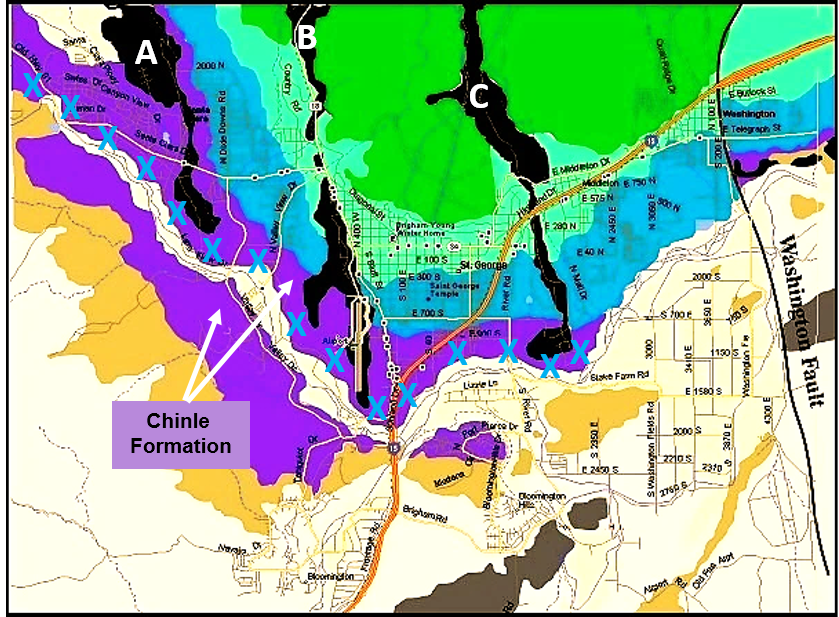

Rocks overlying the Shinarump Conglomerate collectively make up the Petrified Forest Member of the Chinle. They consist of layers of variable colored fine-grained rocks such as siltstones, mudstones, and clay. Also found in this member are fossil remains of trees in the form of silica-replaced petrified logs (Figure 6). As indicated in Figure 2, these sediments originally formed in a variety of warm climate environments such as rivers, floodplains, lakes, and ponds. Additionally, layers of volcanic ash were blown in from the west and deposited with the other sediments.

A model illustrating deposition of these sediments and volcanic ash is illustrated by Figure 7. Subsequent to their deposition and burial, various types of physical and chemical alterations occurred (Figure 8). The resulting rocks which formed from these changes are now known as the Chinle Formation (Figure 9).
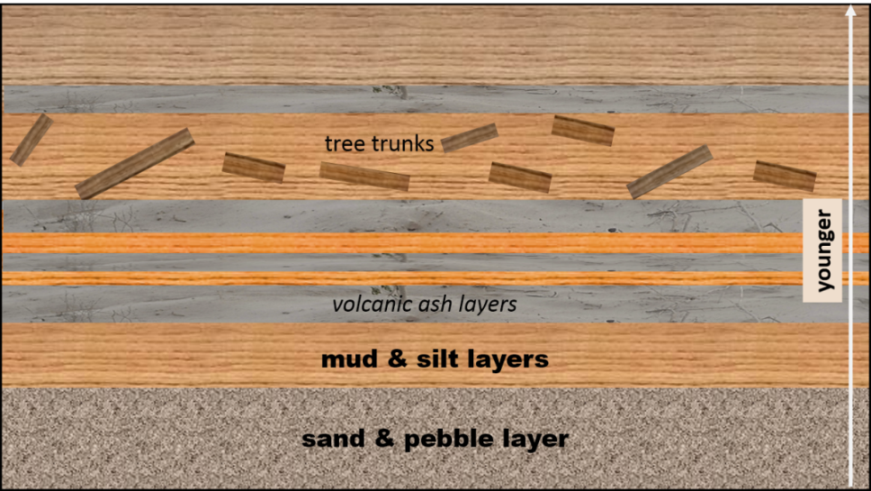
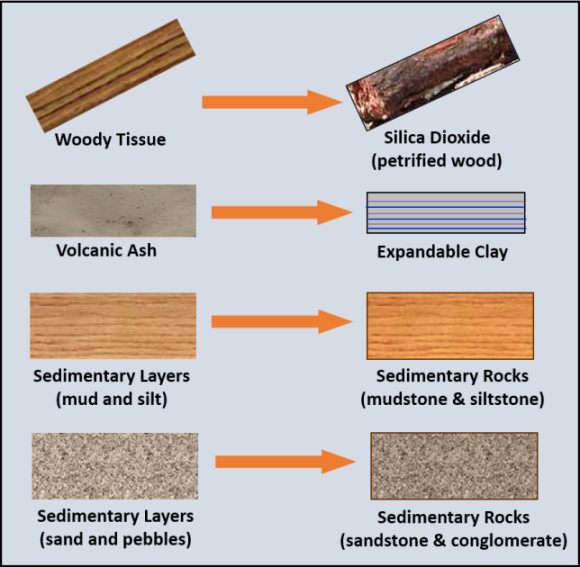
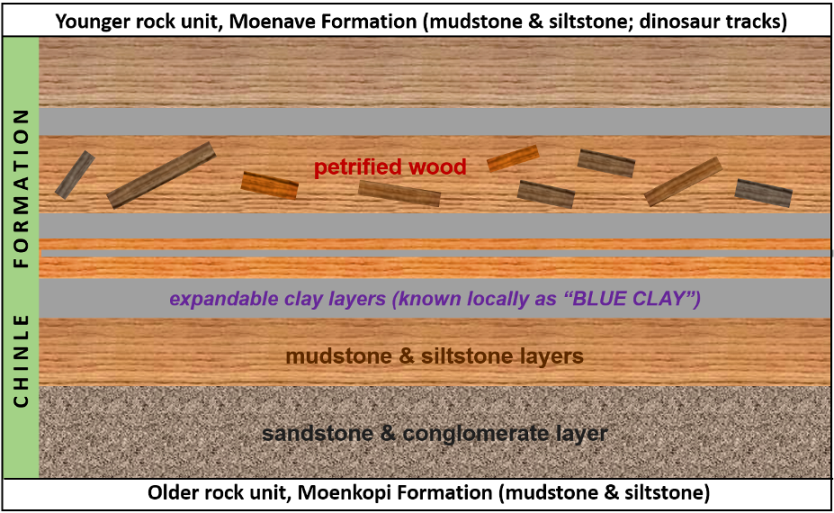

As noted in Figure 4, in the St. George area blue clay within the Petrified Forest Member is exposed in an arc-like pattern. The entire Chinle Formation is tilted so that as you progress northward, it dips deeper below the surface. Therefore, it is mostly where the clay is exposed or very close to the surface that there are potential hazards in terms of slides, slumps, and damage to structures (Figure 11).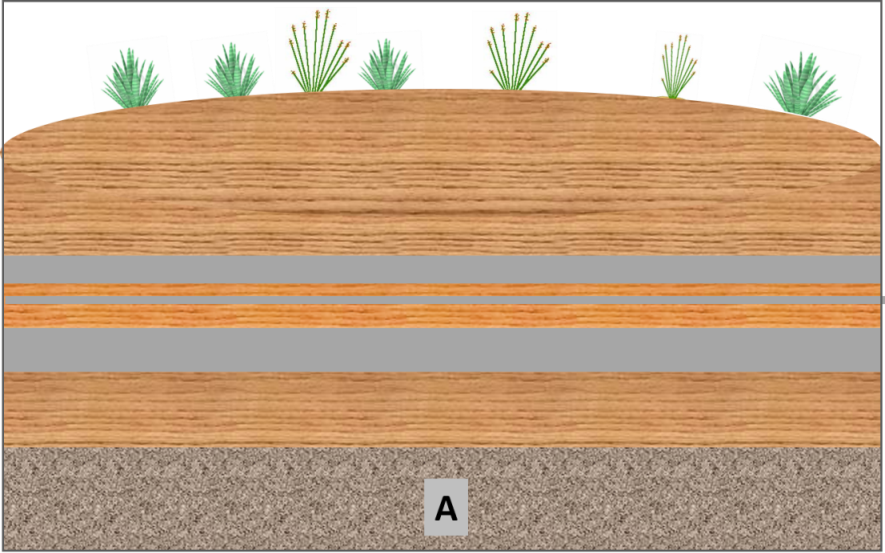
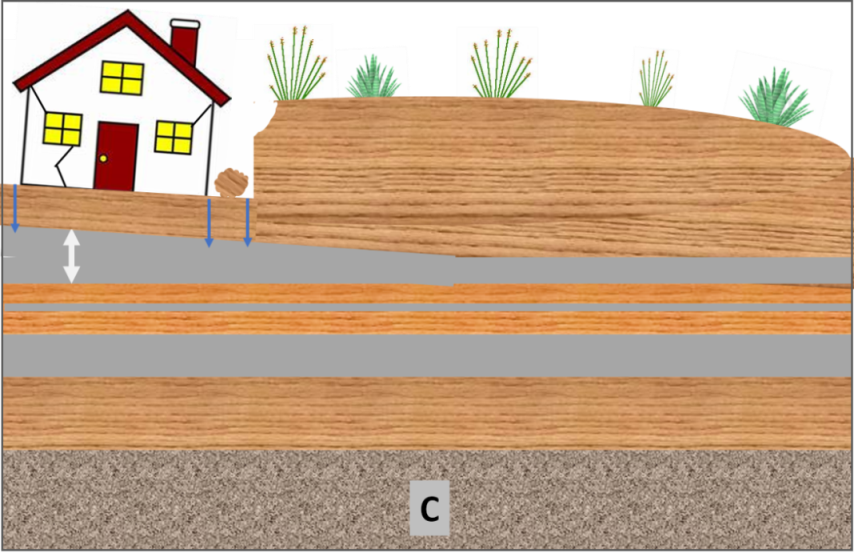
Examples of damage to structures in St. George (Figure 12). Some structures can be repaired, but others must be demolished, such as the condominium unit and the Knights Inn Motel. Building on blue clay is risky, but engineering techniques can be used to minimize or eliminate potential problems (Figure 13), although there is a significant cost to do so. A very worthwhile idea would be to hire a registered geologist to examine any property before it is purchased. Moral: Modest up-front expenses may save large future expenses.
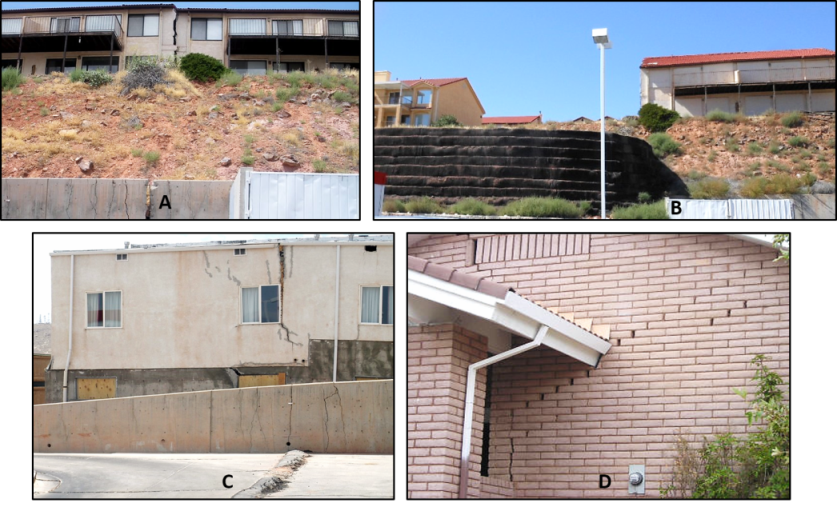
Historic geologic events that have played a role in the formation of blue clay are described in Table 1.
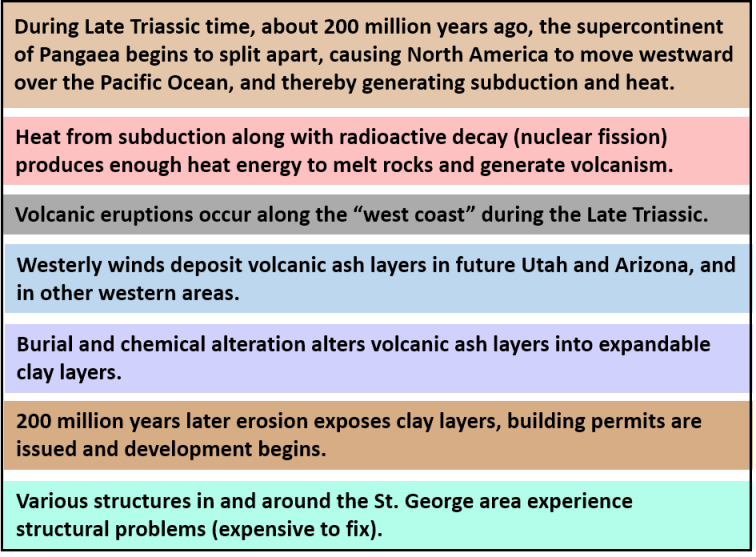
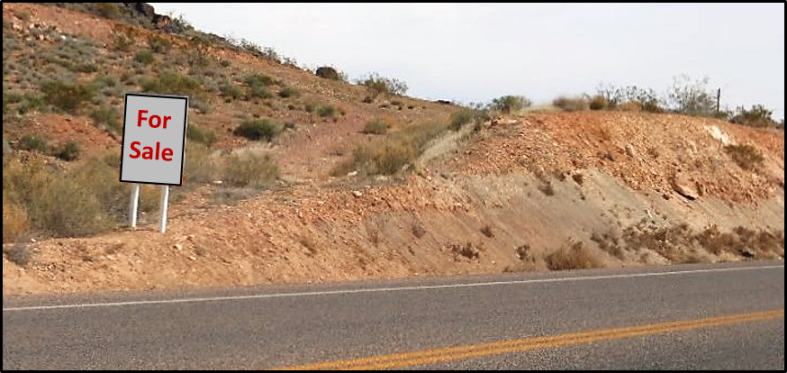
I thank Janice Hayden, professor at DSU, and Andrew Rupke and Lance Weaver of the Utah Geological Survey for suggesting some ideas and providing reference material for this article.
Articles related to “Our Geological Wonderland: Blue clay”
Our Geological Wonderland: Quail Lake and the Virgin Anticline
Our Geological Wonderland: Dinosaur Discovery Site at Johnson Farm
Our Geological Wonderland: A trip through the Virgin River Gorge

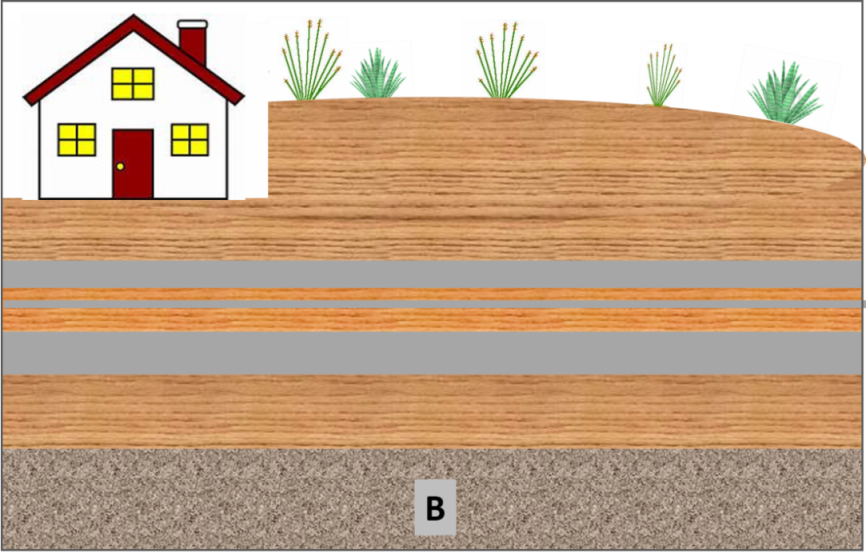
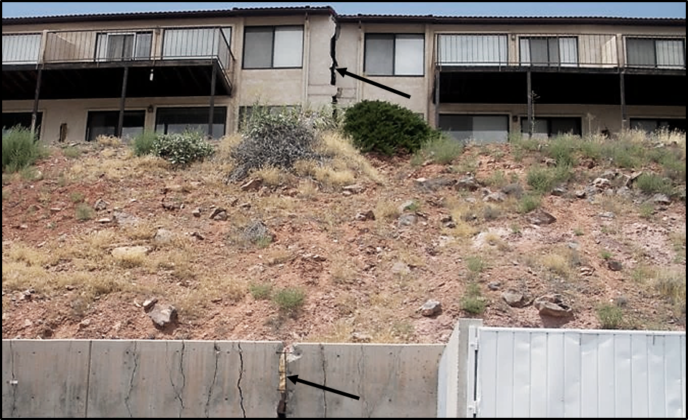
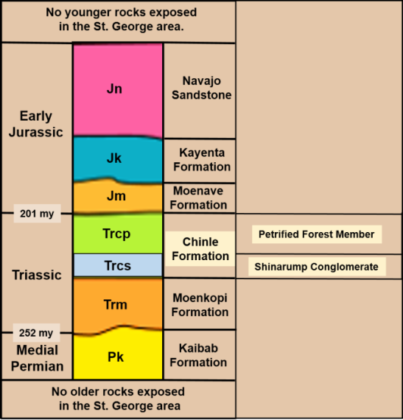
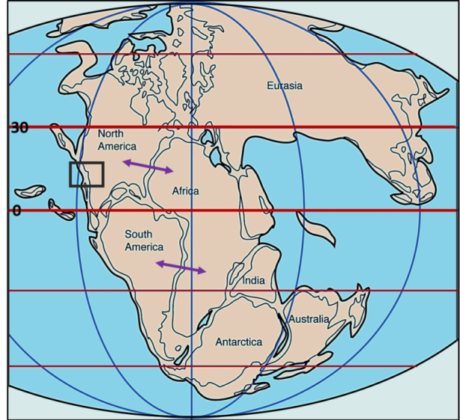
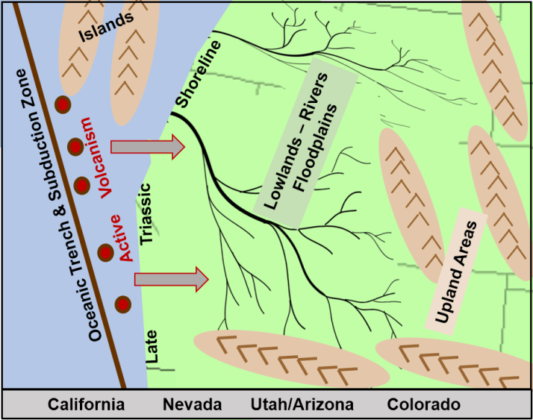
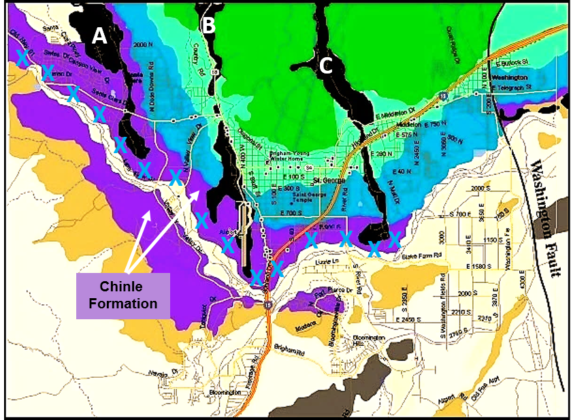
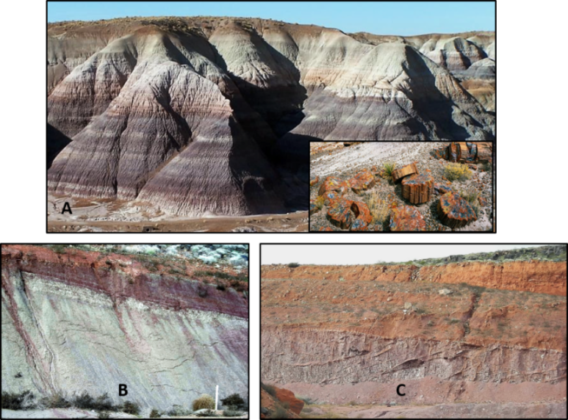
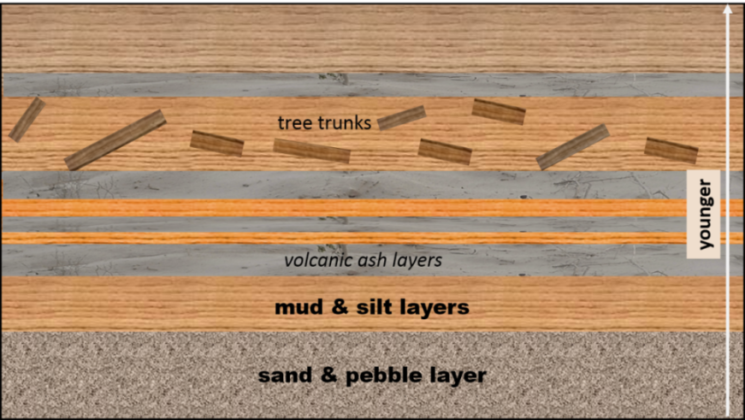
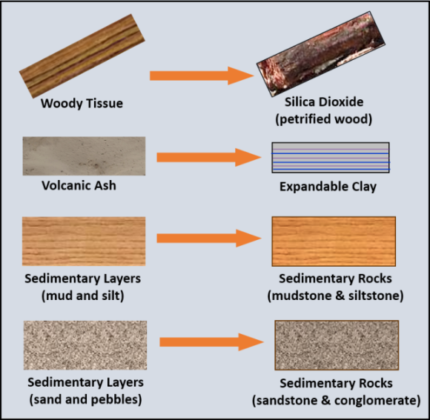
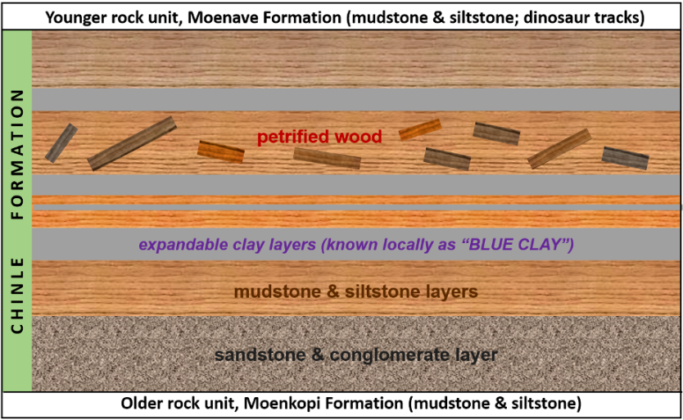
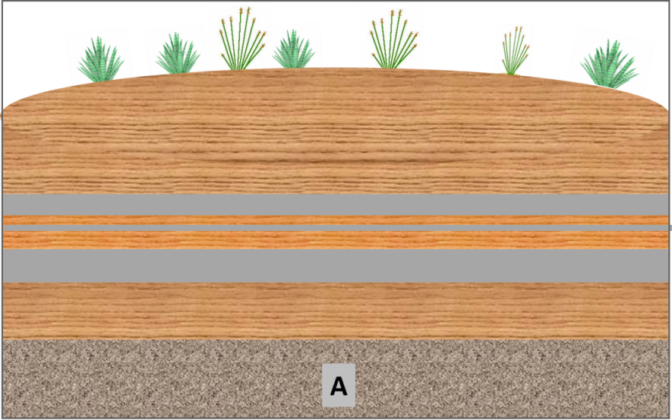
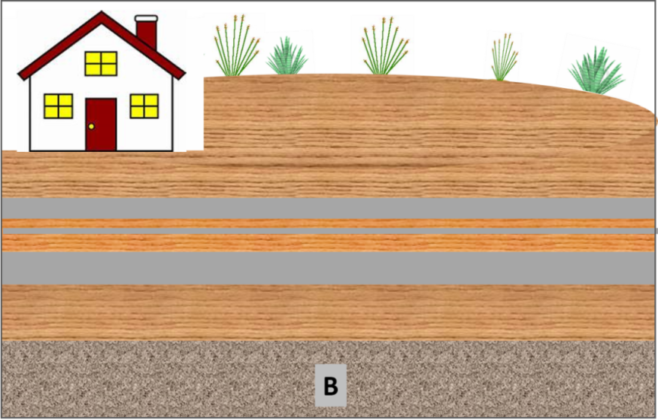
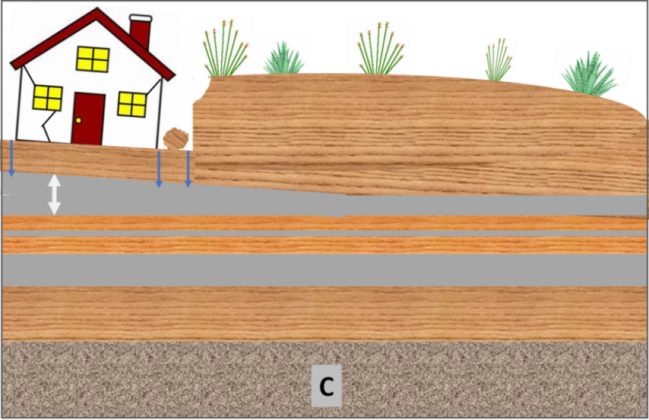
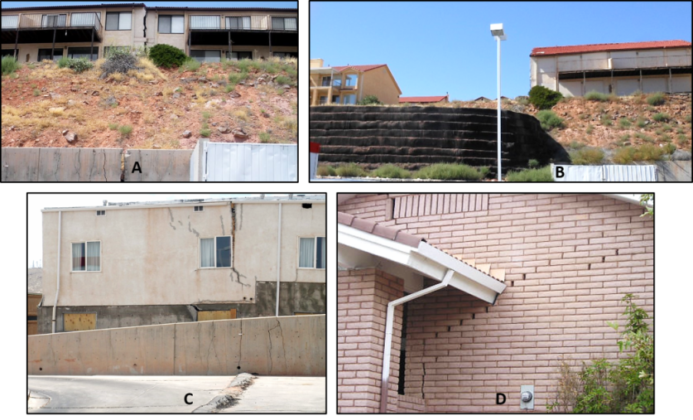



Great article. I live in a blue clay zone, and fortunately the foundation of my house has remained intact for over 30 years. However I was digging post holes in my backyard and discovered blue clay about 3′ down. Fortunately it is way in the backyard 30’+ from the house. I would call it purple clay. The local church near my house is famous for the original foundation crumbling due to blue clay deposits. The neighbor across the street had their foundation rebuilt due to blue clay a year or so after the house was built in the late 80s. All I can say is buyer beware.